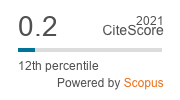Asociación entre bajo peso al nacer y malformaciones congénitas
Resumen
Objetivo: Evaluar la asociación entre el bajo peso al nacer y la manifestación de anomalías congénitas en neonatos.
Métodos: Se realizó un estudio transversal. La población de estudio fueron madres que dieron a luz a neonatos en un hospital de Asunción, Paraguay, en 2018. Se crearon fichas de recolección de datos con las características maternas y neonatales. La variable desenlace fue malformaciones congénitas al nacimiento. La variable exposición fue bajo peso al nacer, definido como el reporte clínico de peso menor a 2 500 gramos en un neonato.
Resultados: De 225 mujeres, se encontró que el 26,7 % presentó infecciones de transmisión materno-neonatal (60/165); 102 (45,3 %) fueron prematuros y 79 (35,1 %) presentaron malformaciones congénitas. Se evidenció asociación positiva entre antecedente de bajo peso al nacer y malformaciones congénitas (RP= 2,32; IC 95 %: 1,68-3,20).
Conclusiones: Se evidencia una asociación positiva entre el antecedente de bajo peso al nacer y la presencia de malformaciones congénitas.
Palabras clave
Referencias
DeSilva M, Munoz FM, Mcmillan M, Kawai AT, Marshall H, Macartney KK, et al. Congenital anomalies: Case definition and guidelines for data collection, analysis, and presentation of immunization safety data. Vaccine. 2016; 34(49):6015-26. DOI: 10.1016/j.vaccine.2016.03.047
Kouame BD, n’guetta-Brou IA, Kouame GSY, Sounkere M, Koffi M, Yaokreh JB, et al. Epidemiology of congenital abnormalities in West Africa: Results of a descriptive study in teaching hospitals in Abidjan: Cote d’Ivoire. Afr J Paediatr Surg. 2015; 12(1):51-5. DOI: 10.4103/0189-6725.150983
Boyle B, Addor M-C, Arriola L, Barisic I, Bianchi F, Csáky-Szunyogh M, et al. Estimating Global Burden of Disease due to congenital anomaly: an analysis of European data. Arch Dis Child - Fetal Neonatal Ed. 2018; 103(1):f22-8. DOI: 10.1136/archdischild-2016-311845
Cosme HW, Lima LS, Barbosa LG. Prevalence of congenital anomalies and their associated factors in newborns in the city of São Paulo from 2010 to 2014. Rev Paul Pediatr. 2017; 35(1): 33-8. DOI: 10.1590/1984-0462/;2017;35;1;00002
Concepción-Zavaleta M, Cortegana-Aranda J, Zavaleta-Gutierrez F, Ocampo-Rugel C, Estrada-Alva L. Factores maternos asociados a malformaciones congénitas en recién nacidos de un Hospital de Trujillo, Perú. Rev Cuerpo Med HNAAA. 2019; 9(2):99-104. DOI: 10.35434/rcmhnaaa.2016.92.128
Ambou Frutos I, Lastra Pérez L, Vilches Lescaille D, Osorio Illas L, Ramos López M, Rodríguez Ahuar N. Manifestaciones clínicas asociadas al síndrome de TORCH. Rev Cubana Oftalmol. 2018 [acceso: 04/05/2022]; 31(1):132-144. Disponible en: http://scielo.sld.cu/scielo.php?script=sci_arttext&pid=S0864-21762018000100013
Michael E, Wadhwani R, Resident S. Urinary tract infection and its effect on outcome of pregnancy. Indian J Obstet Gynecol Res. 2017 [acceso: 04/05/2022]; 4(2):108-11. Disponible en: https://www.ijogr.org/article-details/4048
Wang Y, Li S, Ma N, Zhang Q, Wang H, Cui J, et al. The association of ToRCH infection and congenital malformations: A prospective study in China. Eur J Obstet Gynecol Reprod Biol. 2019; 240:336-40. DOI: 10.1016/j.ejogrb.2019.04.042
Dolan SM, Gross SJ, Merkatz IR, Faber V, Sullivan LM, Malone FD, et al. The Contribution of Birth Defects to Preterm Birth and Low Birth Weight. Obstet Gynecol. 2007; 110(2 Pt 1):318-24. DOI: 10.1097/01.AOG.0000275264.78506.63
Silva-Díaz H, Arriaga-Deza EV, Failoc-Rojas VE, Alarcón-Flores YR, Rojas-Rojas SY, Becerra-Gutiérrez LK, et al. Seroprevalence of toxoplasmosis in pregnant women and its associated factors among hospital and community populations in Lambayeque, Peru. Rev Soc Bras Med Trop. 2020; 53:e20190164. DOI: 10.1590/0037-8682-0164-2019
Eiríksdóttir VH, Ásgeirsdóttir TL, Bjarnadóttir RI, Kaestner R, Cnattingius S, Valdimarsdóttir UA. Low birth weight, small for gestational age and preterm births before and after the economic collapse in Iceland: a population based cohort study. PLoS One. 2013; 8(12):e80499. DOI: 10.1371/journal.pone.0080499
Reller MD, Strickland MJ, Riehle-Colarusso T, Mahle WT, Correa A. Prevalence of congenital heart defects in Metropolitan Atlanta, 1998-2005. J pediatr. 2008; 153(6):807-13. DOI: 10.1016/j.jpeds.2008.05.059
Abdul Hamid MP, Ali H, Abbas F. Congenital Anomalies in the Offspring of Mothers with Torch Infections during Pregnancy. Ophtalmol Update. 2015 [acceso: 04/05/2022]; 13:325-8. Disponible en: https://ophthalmologyupdate.org/public/site/oct-dec2015.pdf
Leung KKY, Hon KL, Yeung A, Leung AKC, Man E. Congenital infections in Hong Kong: an overview of TORCH. Hong Kong Med J. 2020; 26(2):127-38. DOI: 10.12809/hkmj198287
Fochi MM, Baring S, Spegiorin LC, Vaz-Oliani DC, Galão EA, Oliani AH, de Mattos LC, de Mattos CC. Prematurity and Low Birth Weight did not Correlate with Anti-Toxoplasma gondii Maternal Serum Profiles--a Brazilian Report. PLoS One. 2015; 10(7):e0132719. DOI: 10.1371/journal.pone.0132719
Montes-Núñez S, Chávez-Corral DV, Reza-López S, Sanin LH, Acosta- Maldonado B, Levario-Carrillo M. Birth weight in children with birth defects. Birt Defects Res A Clin Mol Teratol. 2011; 91(2):102-7. DOI: 10.1002/bdra.20751
Ngo S, Profit J, Gould JB, Lee HC. Trends in patent ductus arteriosus diagnosis and management for very low birth weight infants. Pediatrics. 2017; 139(4): e20162390. DOI: 10.1542/peds.2016-2390
Linhart Y, Bashiri A, Maymon E, Shoham-Vardi I, Furman B, Vardi H, et al. Congenital anomalies are an independent risk factor for neonatal morbidity and perinatal mortality in preterm birth. Eur J Obstet Gynecol Reprod Biol. 2000; 90(1):43-9. DOI: 10.1016/s0301-2115(99)00196-7
Miquel-Verges F, Mosley BS, Block AS, Hobbs CA. A spectrum project: preterm birth and small-for-gestational age among infants with birth defects. J Perinatol. 2015; 35(3):198-203. DOI: 10.1038/jp.2014.180
Enlaces refback
- No hay ningún enlace refback.
URL de la licencia: https://creativecommons.org/licenses/by-nc-sa/4.0/deed.es





 La revista es de acceso abierto y gratuito.
La revista es de acceso abierto y gratuito.